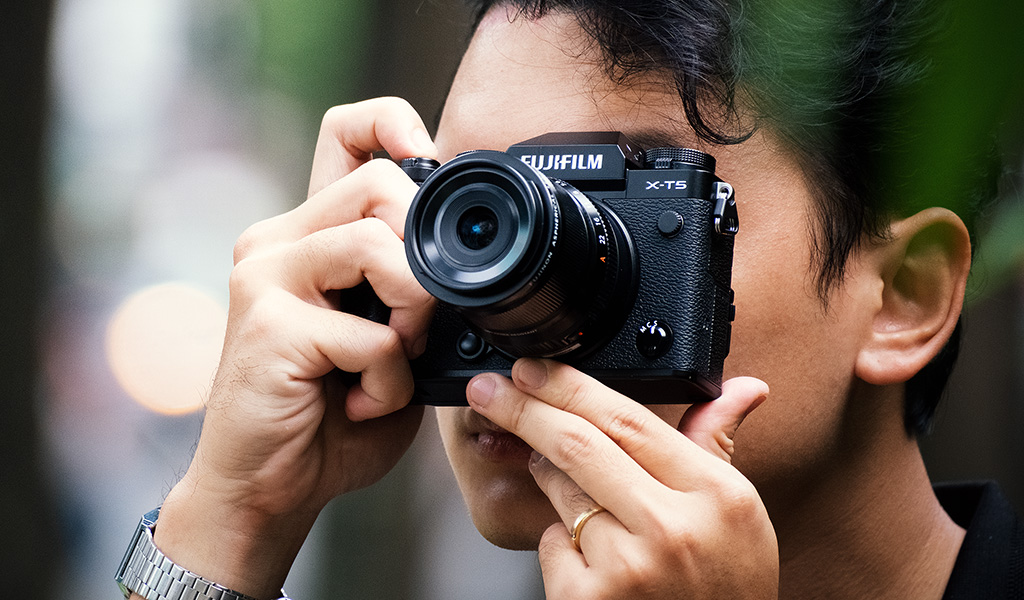
Finding the perfect gifts for photographers can be tricky, but it’s also a chance to surprise them with something they’ll genuinely love and use. No matter their experience level, photographers love new gear—especially when it makes their job easier or inspires a creative idea. Fortunately, there are plenty of camera accessories that make excellent gifts for any photographer.
From practical accessories to cutting-edge gadgets, this guide highlights some of the best options to inspire their craft and make their photography journey even more rewarding.
LowePro Tahoe BP 150 camera backpack
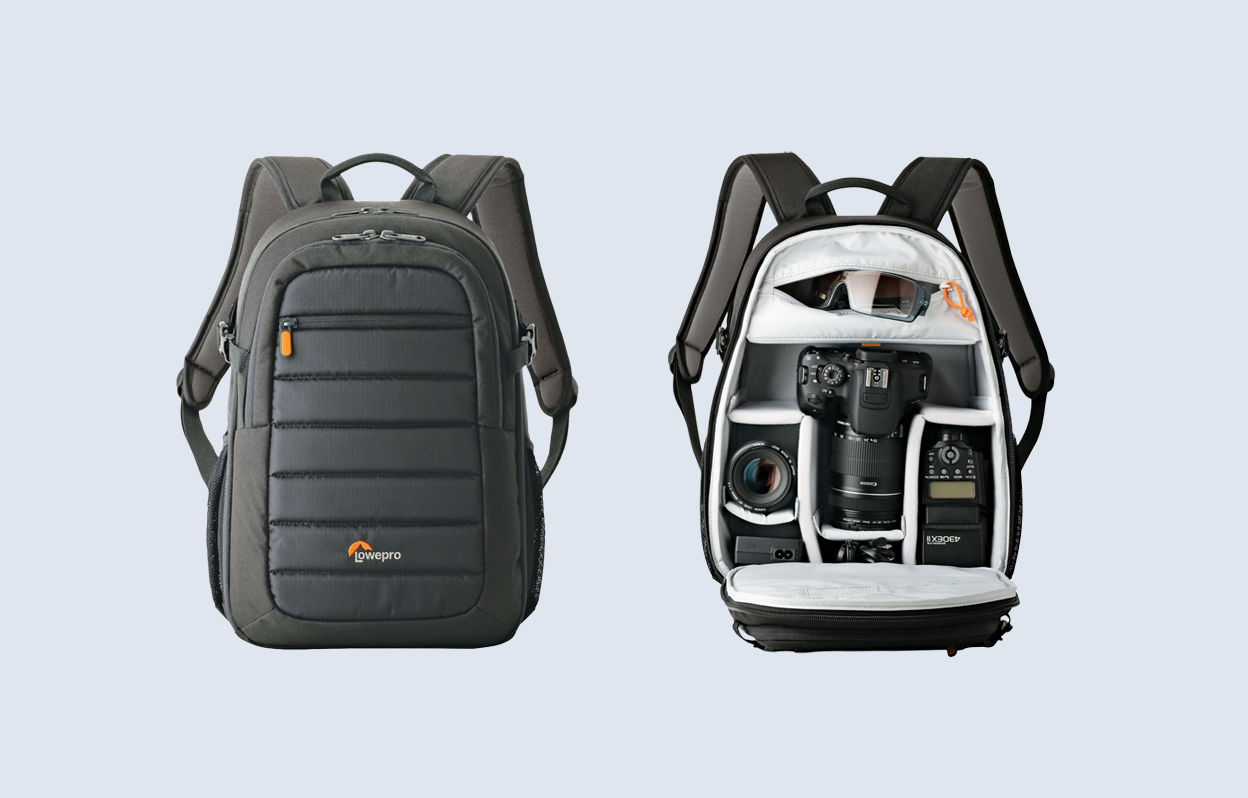
Good camera bags are great gifts for photographers who want to keep their equipment safe. Not just safe, but also accessible, which is key to making a bag helpful for anything you want to capture or record in the field. The LowePro Tahoe BP 150 backpack isn’t exclusively for DSLR cameras. It can also fit mirrorless cameras, an extra lens, and other accessories you may need while out in the field. For instance, it includes compartments for a tablet, phone, lights, microfibre cloths, memory cards, and more. A water bottle mesh pocket on the side can keep you hydrated over the course of a day on top of that.
The main compartment can fit up to two camera bodies and four lenses, though it’s easier with mirrorless bodies. Or you could carry a camera body with lens and flash. Maybe a camera with a small drone (that folds up). There are a number of different possibilities, depending on how you set up the Velcro separators inside. It has special pouches for memory cards, as well as other small supporting accessories.
There are plenty of other bags and pouches that come in different forms, including hard cases with tougher protection should they need that. You can check out all the camera bags currently available if you have something else in mind.
Peak Design travel tripod

A good tripod can make a big difference in how you capture certain scenes, especially in low-light or night conditions. All sorts of photography and videography benefit from a tripod’s stability, only they can be a little cumbersome to carry around. Not so with the Peak Design travel tripod, which comes in two models: Aluminum and Carbon fibre. They are otherwise the same, yet differ on their build and weight. The Aluminum one will be a little sturdier but also heavier, whereas the Carbon fibre one is more lightweight. Both are capable of handling up to 20 pounds, so perfectly fine with cameras and smartphones.
It folds in neatly and makes for a pretty short form factor once you condense it. It comes with its own soft case and a (separately sold) shoulder strap can simplify carrying it around. You also have the option to strap it to a backpack and carry it around that way too. A small wrench tool comes with the tripod (there’s a nice slot for it) to tighten or loosen the mounting plate while a mobile mount comes out of the bottom of the height extension.
Joby GripTight Action mini tripod
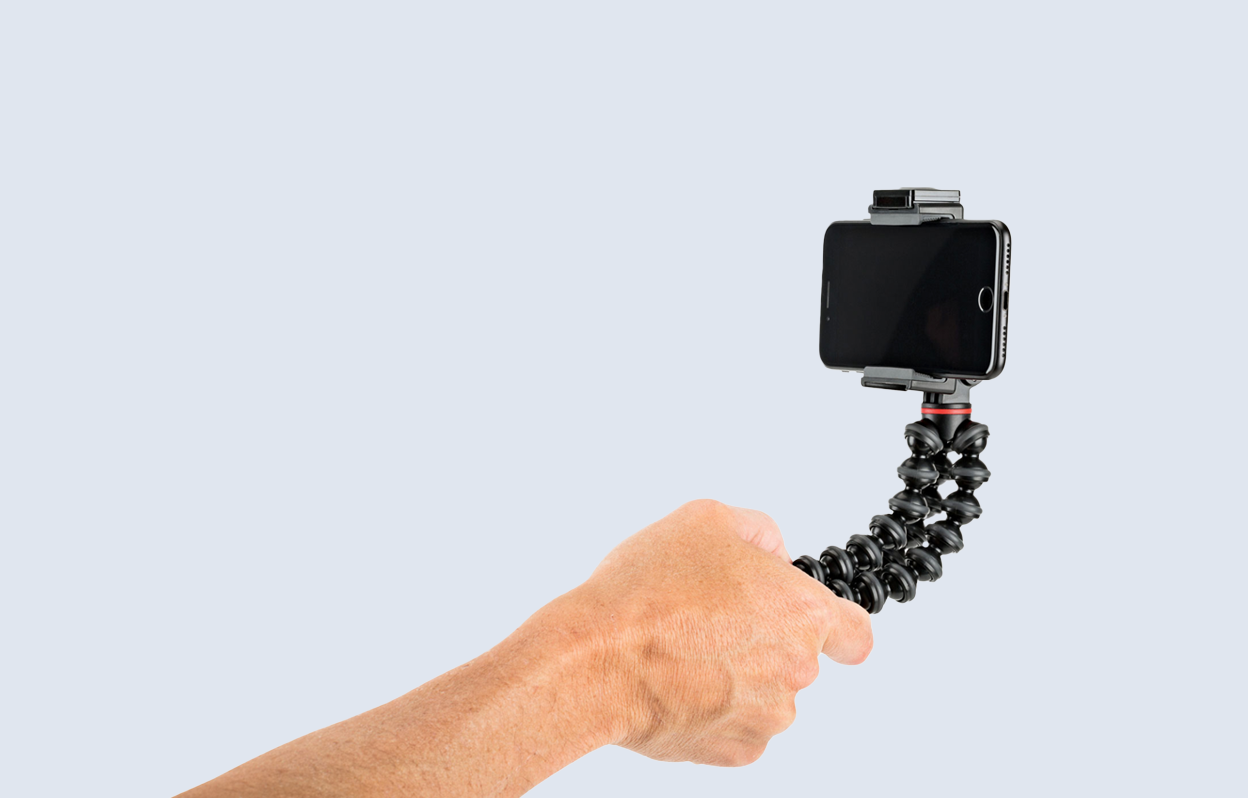
As small as the Peak Design tripod gets, you can always consider a mini tripod as an addition for photographers who want even more creative flexibility. The Joby GripTight Action mini tripod is pretty versatile in that it lets you mount a smartphone or action camera and have it face any direction you want. Use it for selfies or take interesting photos or video from unique angles given the shorter height.
Since this is a Joby tripod, the flexible legs also allow you to contort them or wrap them around a variety of different objects. It may not be the sturdiest mini tripod out there, but it’s hard not to like how crafty it can be. A cold shoe adapter at the top of the mount enables you to add an LED light or microphone. With all that in mind, it’s easy to set it up for selfie video or to document what you see on a trip or project.
If your needs somewhat vary from these two options, you can always check out all the other tripods currently available.
DigiPower 50 LED InstaFame video light
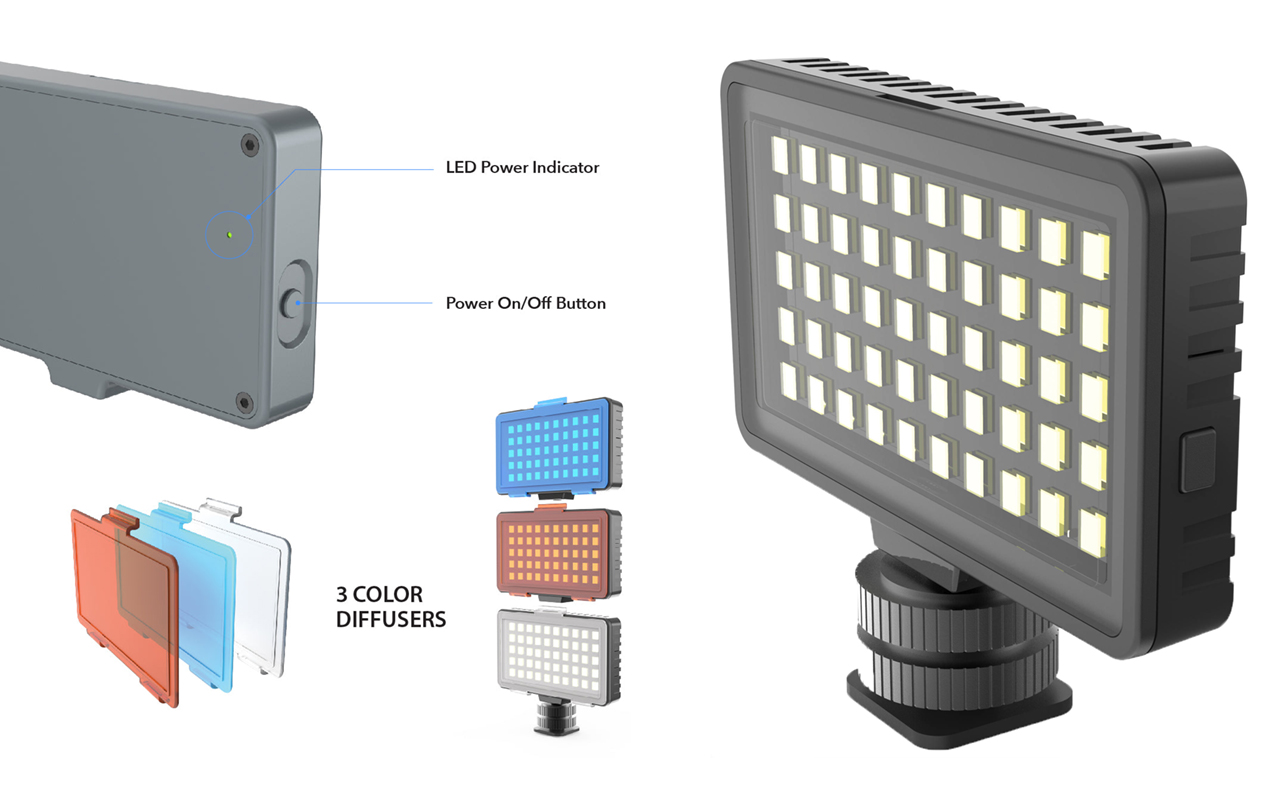
Casting some light on a subject can make or break an image, and LED lights can come to the rescue. A cost-effective example lies in the DigiPower 50 LED InstaFame video light, which is not only compact, but super easy to carry along with your camera. It mounts on your camera or a tripod to point it at a subject from whichever angle you prefer. While it doesn’t change colour on its own, it comes with three clip-on diffusers for cool, warm, or neutral light.
The built-in rechargeable battery can last for up to one hour, though light intensity can affect that. Manually adjust how bright you want the light to be, and dimmer light can extend battery life a little. The light is small, so it’s not powerful enough to illuminate an entire room, though it is a good way to add some flair to whatever images or footage you capture.
There are various lighting solutions available that make great gifts for photographers. If flash photography is part of their creative vision or workflow, flashes now often work with wireless receivers attached to your camera. Shoot from one angle, while the flash goes off from another.
Satechi USB-C MicroSD/SD card reader
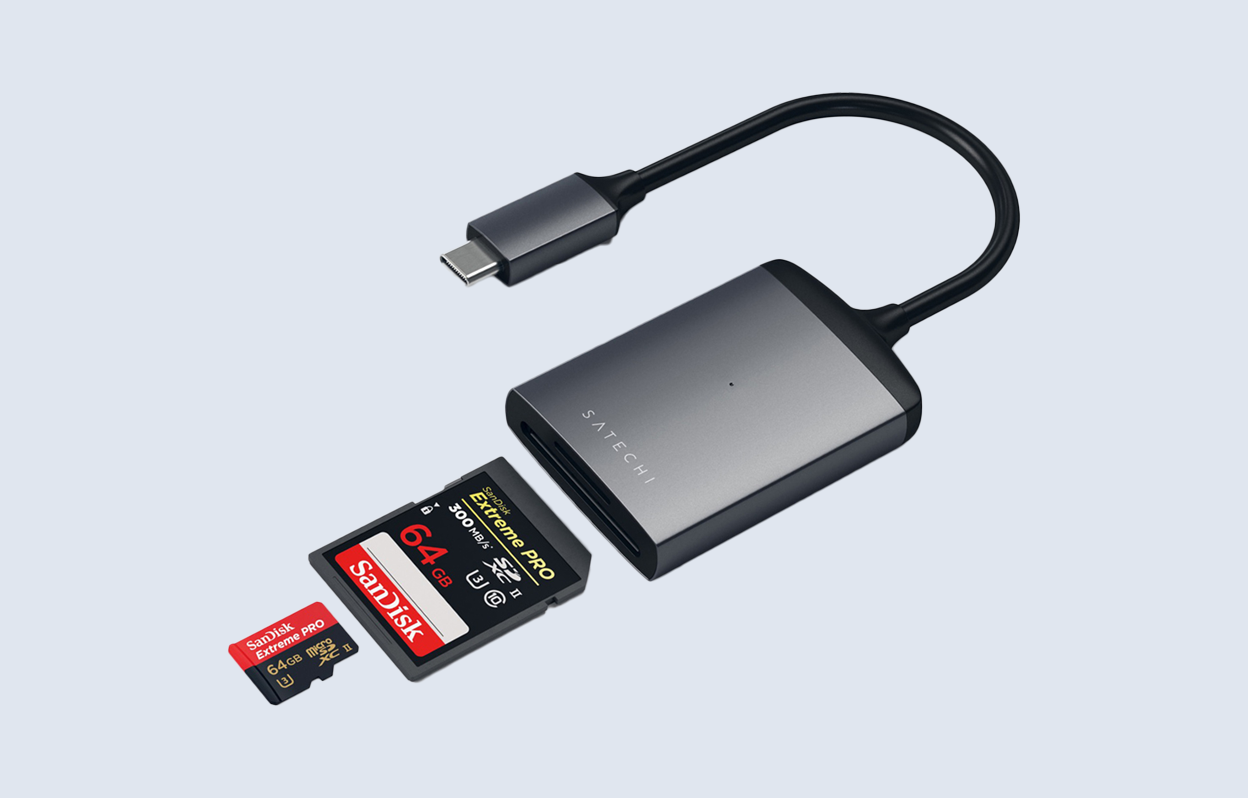
A memory card reader might not seem like the flashiest gift for photographers, but it’s hard to argue with its usefulness. The Satechi USB-C MicroSD/SD card reader isn’t complicated. It’s a hub with two slots—one for microSD cards, the other for SD cards. It supports SD 4.0 UHS-II memory cards and is backwards compatible with UHS-1, SDXC/SDHC/SD cards, so you can essentially put any card in there. It also works the same way with Windows PC and Apple Mac computers, making it agnostic by platform as well.
Transferring files is pretty quick with speeds up to 312MB/s, which is ideal for larger media files, especially for video editing. While the reader itself doesn’t have any storage, using it opens up the opportunity to slot in another memory card to your laptop if it has its own slot. That way, you can pull in files from multiple cards and streamline your workflow. Since it’s easy to travel with, it can go anywhere you go.
Memory cards and readers come in different storage and size options. Check them out to find the perfect present for the photographer in your life.
DJI Mic 2 wireless microphone

They might not need a microphone for still photos, but for video, a good one is a must. With today’s cameras more than capable of shooting high-quality footage, capturing clearer audio is another story. The internal mics on these cameras aren’t good enough to do the job, and that’s where an external mic comes in. The DJI Mic 2 is a good choice for handling audio for a number of reasons.
First, it’s an all-in-one dual-channel wireless system, which you can expand by using a second mic so that two people can record to the same transmitter. The main unit only comes with one mic, but you can also choose the bundle with two mics. The second main draw is you don’t need a DJI device to use the system (though it’s great with DJI’s products). It works with smartphones, tablets, and cameras, courtesy of the included cables enabling their connection. This is a pretty versatile system that would fit a lot of content creation opportunities.
Recording audio while shooting video comes in different forms, so be sure to check out the other microphones available.
Fujifilm Instax Mini Link 3 smartphone printer

Why not a printer? If they’re the type that like to share their craft with others, printing images is one way to do that. The nostalgia and permanence of a print keeps lasting memories in ways that differ from sharing images online. The Fujifilm Instax Mini Link 3 smartphone printer can be a real hit at parties, especially since it requires few steps to print. It’s also pocket-sized, so you can bring it to any party you attend too. With three different colours to choose from, you can decide on a little style as well.
The printer works via Bluetooth, controlled through the Instax Mini Link app on iOS or Android. It uses film cartridges of 10 exposures that you slot in and can output images with unique effects or borders to look more like an old school Polaroid. These are small 1.8-by-2.4-inch prints, with options for basic white borders or a variety of other styles in case you want to change it up or match a theme. No matter your choice, you can expect photos to turn out with rich colours.
Now that prints are coming back in style, you can check out all the photo printers currently available.
DJI Neo drone

Flying a drone comes with some rules you need to follow in Canada but parameters are more relaxed with small models. That might be a good place to start when looking for gifts for photographers. For something truly lightweight and easy to fly, the DJI Neo stands out as a fun way to do it. At times, it feels like a toy that happens to shoot photos and video, but what makes it feel adaptable are the automated modes that stay focused on you or any subject you choose.
It lacks the obstacle avoidance of some of DJI’s more advanced drones, though maintains impressive stability in varied conditions. It’s easy to control it via the DJI Fly app (iOS or Android), or you can try your hand with the RC-N3 Controller or your eyes with the Goggles N3 depending on which kit you opt for. The sheer depth of features and settings available is impressive, opening up possibilities in what you can create when you get it in the air. If you’re curious to learn more about what it’s like to fly it, make sure to read my review.
The Neo is only one way to fly. There are many other drones available that would make great presents.
Find the perfect gift for photographer at Best Buy
Gifts for photographers come in various forms. Hopefully, this gives you a great starting point for finding something that supports their creative pursuits. For even more gift ideas for photographers, check out the latest cameras and camera accessories available now.






As a photographer, I love how this list balances practicality and creativity! A sturdy backpack, a versatile tripod, and a quality light can make a huge difference in capturing the perfect shot. The DJI Mic 2 is a great addition for video creators, and the Instax Mini Link 3 brings a fun, nostalgic touch to photography. Solid picks all around! ✨
Anyone looking to buy for the beginner photographer in their lives should pick up some lights like you suggest. Nothing will teach them more about photography than learning to control and shoot with artificial lights. Doesnt have to be expensive especially when starting out but it will quickly elevate their photos to a whole new level.
Great Blogpost! You have shared good stuff with everyone. Your blog contains good information about camera accessories. We can also gift these accessories to the photographer as well as the people who are having their own DSLR. This will be a great gift for them. Thank you for sharing such a valuable post.
Comments are closed.